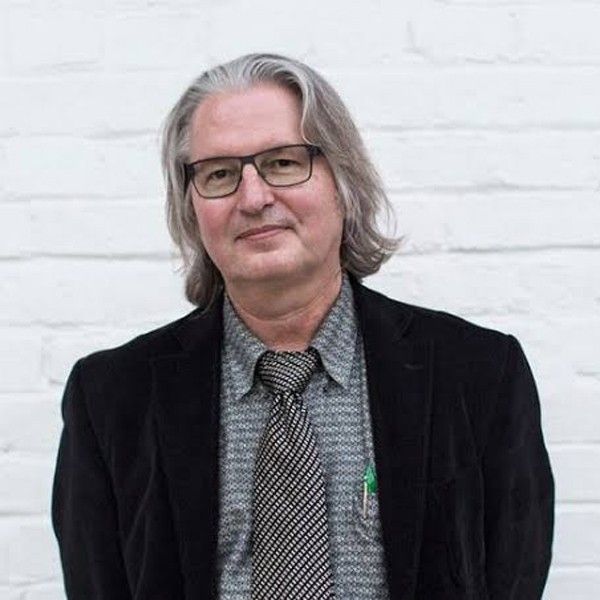The Concept of Disturbance in Architecture
In architecture, disturbance can refer to intentional design choices that disrupt or challenge traditional conventions or expectations. This can involve elements such as irregular shapes, asymmetrical designs, or the use of unexpected materials. Disturbance in architecture can create a sense of dynamism, surprise, or even provoke thought and reflection in the viewer. It is often used to push boundaries, create unique and memorable architectural experiences.
In the history of architecture, the concept of disturbance can be seen in various forms and movements that have challenged traditional norms and styles. One notable example is the Gothic architecture of the Middle Ages, which introduced disruptive elements such as pointed arches, ribbed vaults, and flying buttresses that contrasted with the earlier Romanesque style.
Another example is the Baroque architecture of the 17th and 18th centuries, which embraced dramatic forms, intricate ornamentation, and dynamic lighting effects to create a sense of movement and emotion. These disruptions to classical architectural principles were intended to evoke a sense of awe and grandeur in viewers.
Movements such as Deconstructivism in the late 20th century have further explored the concept of disturbance in architecture by breaking down traditional forms and creating fragmented, non-linear structures that challenge perceptions of space and function.
Disturbance in architecture has been a recurring theme throughout history, reflecting the evolution of cultural, technological, and artistic influences on the built environment. Leon Battista Alberti is not typically credited as the first architect to use disturbance in architecture, he did play a significant role in the development of architectural theory and practice during the Renaissance period. Alberti was a prominent Italian architect, theorist, and author who wrote the influential treatise "De re aedificatoria" (On the Art of Building), which outlined principles of classical architecture and design.
Alberti's work focused on harmonious proportions, mathematical principles, and the revival of classical forms from ancient Rome. While his designs were based on principles of balance and symmetry, Alberti also emphasized the importance of variety and diversity in architecture to create interest and beauty.
It is difficult to pinpoint a single architect as the "first" to introduce disturbance in architecture, as the concept of challenging conventions and disrupting traditional norms has been a recurring theme throughout architectural history. However, there have been several architects and movements that have been particularly influential in pushing boundaries and introducing disruptive elements in their designs.
In more recent times, architects associated with movements like Deconstructivism, such as Frank Gehry and Zaha Hadid, have been known for their unconventional approach to architecture, breaking down traditional forms and creating fragmented, non-linear structures that challenge perceptions of space and function.
The concept of disturbance in architecture has evolved over time, with various architects and movements contributing to the exploration of disruptive elements in design.In architectural theory, the concept of postulate space refers to a theoretical or speculative space that is not necessarily bound by physical or practical constraints.Postulate space is often used as a conceptual tool for exploring ideas, theories, and design possibilities that may not be realizable in the physical world but can inspire innovative thinking and creative solutions.
Gian Lorenzo Bernini, an Italian architect and artist of the Baroque period, is known for his innovative and disruptive approach to architecture. Bernini was a master of dramatic and dynamic forms, using light, shadow, and movement to create emotional and theatrical spaces.
One of Bernini's most famous architectural works is the colonnade surrounding St. Peter's Square in Vatican City, which features rows of columns that appear to embrace and welcome visitors to the square. The colonnade's undulating form creates a sense of movement and rhythm, directing the eye towards the central obelisk and the façade of St. Peter's Basilica.
In addition to his architectural works, Bernini was also a skilled sculptor and painter, known for his dynamic and expressive sculptures that capture moments of emotion and excitement. His ability to integrate sculpture, architecture, and space in innovative ways set him apart as a groundbreaking figure in the history of art and architecture.
Bernini's work exemplifies the concept of disturbance in architecture through his bold and theatrical designs that challenge traditional norms and create immersive and engaging spaces for viewers.
Francesco Borromini, not "Brononi," was indeed an influential Italian architect known for his innovative and dynamic Baroque style. Borromini was a contemporary of Gian Lorenzo Bernini, and the two artists had a significant impact on the architectural landscape of Rome during the 17th century.
Francesco Borromini was known for his complex and inventive architectural designs, characterized by geometric and spatial experimentation. His buildings often featured intricate curves, dramatic angles, and dynamic use of light and shadow to create visually stunning and emotionally engaging spaces.
Some of Borromini's most famous works include the Church of San Carlo alle Quattro Fontane and the Church of Sant'Ivo alla Sapienza in Rome, both of which showcase his mastery of Baroque architecture and his ability to create dynamic and immersive environments.
Like Bernini, Borromini pushed the boundaries of traditional architectural conventions and introduced new forms and ideas into his designs. His work continues to be celebrated for its creativity, complexity, and beauty in the history of architecture.
The Baroque style, which emerged in the late 16th century and flourished in the 17th and early 18th centuries, is characterized by its ornate and dramatic elements, dynamic use of space, and emotional intensity.
In Baroque architecture, architects sought to create grandiose and theatrical buildings that evoked a sense of awe and wonder in the viewer. The style often featured elaborate decoration, bold forms, and a sense of movement and dynamism. Baroque buildings were designed to impress and overwhelm, using a variety of architectural elements such as curved lines, dramatic lighting effects, and rich ornamentation.
One of the key figures associated with Baroque architecture is Gian Lorenzo Bernini, an Italian architect, sculptor, and painter who played a significant role in shaping the Baroque style in Rome. Bernini's architectural works, such as St. Peter's Square and the Cornaro Chapel in Santa Maria della Vittoria, exemplify the dynamic and theatrical qualities of Baroque architecture.
Other notable Baroque architects include Francesco Borromini, and Guarino Guarini, whose works in Italy exemplify the elaborate and complex nature of Baroque design.
Andrea Palladio, the renowned Italian Renaissance architect, is known for his classical and harmonious architectural style, rather than for "disturbance methods" in the sense of disruption or chaos. Palladio's work is characterized by its balance, proportion, and adherence to classical principles derived from ancient Roman architecture.
He often incorporated elements such as columns, pediments, and proportions based on mathematical ratios to create elegant and balanced compositions. Palladio's villas, churches, and palaces in the Veneto region of Italy are celebrated for their beauty, simplicity, and classical grace.
While Palladio's work may not be associated with the dramatic and dynamic qualities of Baroque architecture, his designs have had a lasting influence on Western architecture and continue to be studied and admired for their elegance and classical ideals.
Peter Eisenman, the contemporary American architect and theorist, is known for his avant-garde and theoretical approach to architecture. He is associated with the architectural movement known as deconstructivism, which challenges traditional notions of form, structure, and function in architecture.
In his writings, Peter Eisenman has explored a wide range of architectural topics, including historical precedents, theoretical concepts, and design methodologies. It is possible that Eisenman has written about Andrea Palladio and his architectural methods from a critical or theoretical perspective, examining how Palladio's classical principles could be reinterpreted or disrupted through a contemporary lens.
Eisenman's interest in disruption, fragmentation, and the deconstruction of architectural conventions may lead him to analyze historical figures like Palladio in a new light, exploring how their ideas could be subverted or transformed to create innovative and Peter Eisenman, as a prominent architect and architectural theorist, has engaged with the work of Andrea Palladio in his writings and design projects. Eisenman is known for his theoretical approach to architecture, which often involves questioning and reinterpreting architectural conventions and historical precedents.
In his exploration of Palladio's work, Eisenman has focused on how Palladio's classical principles and formal language can be deconstructed, disrupted, or reinterpreted through a contemporary lens. Eisenman's interest in disruption, fragmentation, and the manipulation of architectural elements has led him to critically engage with Palladio's architecture in innovative ways.
Eisenman may analyze Palladio's designs in terms of their underlying geometries, proportions, and spatial relationships, seeking to uncover hidden complexities or contradictions within the seemingly harmonious compositions. He might also explore how Palladio's architectural language could be subverted or transformed to challenge traditional notions of form, structure, and meaning.
By reinterpreting Palladio's works through a deconstructivist or postmodern lens, Eisenman aims to provoke new ways of thinking about architecture, history, and design. His theoretical writings on Palladio likely offer insights into how historical architectural precedents can be reimagined and reinvented in contemporary practice.
Heterogeneous Space;
The concept of heterogeneous space in architecture emerged as a significant theoretical and design idea in the late 20th century, particularly in the fields of postmodernism and deconstructivism. Architects and theorists began to explore the idea of creating spaces that were diverse, complex, and layered, incorporating multiple influences, references, and meanings within a single architectural composition.
Postmodern architects such as Robert Venturi, Denise Scott Brown, and Aldo Rossi embraced the idea of heterogeneous space by challenging the modernist emphasis on purity, simplicity, and uniformity in architecture. They sought to create spaces that were rich in cultural references, historical allusions, and contextual relationships, reflecting the complexities and contradictions of contemporary society.
Deconstructivist architects like Peter Eisenman, Zaha Hadid, and Frank Gehry further pushed the boundaries of heterogeneous space by exploring concepts of fragmentation, dislocation, and ambiguity in architectural form and space. Their designs often featured dynamic and non-linear spatial configurations that challenged traditional notions of coherence and unity.
The notion of heterogeneous space continues to be a prominent theme in contemporary architecture, as architects grapple with the complexities of globalization, digital technology, and cultural diversity. By embracing heterogeneity in their designs, architects can create spaces that are open to multiple interpretations, experiences, and interactions, reflecting the diverse and interconnected nature of the contemporary world.
Overall, the exploration of heterogeneous space in architecture represents a departure from the homogeneity and uniformity of modernist architecture, offering a more nuanced and inclusive approach to spatial design that celebrates diversity, complexity, and multiplicity.
The concept of "Presence of Absence" in architecture often relates to the idea of designing spaces that evoke a sense of something missing or referencing elements that are not physically present. This concept can be deeply powerful in architectural design, allowing for reflection, memory, and emotional connection.
A few ways this concept is applied in architecture:
1- Memorial Architecture: Memorials and monuments frequently use absence to evoke a sense of loss or to commemorate absence itself. For example, the Vietnam Veterans Memorial in Washington, D.C. uses a minimalist design to evoke a powerful emotional response, with the reflective surface allowing visitors to see their own reflections alongside the names of the fallen soldiers, creating a poignant sense of presence and absence.
2- Negative Space: Utilizing negative space effectively can create a strong presence of absence. This is seen in minimalist architecture where the absence of decoration or excessive elements can elicit a sense of calm, focus, or contemplation.
3- Ruins and Adaptive Reuse: Architectural designs that incorporate ruins or historical elements often emphasize what once was, creating a dialogue between past and present. This is evident in structures that preserve old façades or remnants within new designs, highlighting the absence of the original while celebrating its memory.
4- Installations and Temporary Structures: Temporary installations often play with the idea of presence and absence. For instance, temporary pavilions or art installations that are dismantled after a certain period leave a mark on the landscape and memories, emphasizing the impact of their absence after removal.
5-Light and Shadow: The use of light and shadow in architecture can also convey the concept of absence. By controlling how light interacts with spaces, architects can guide attention to certain areas while creating an interplay between seen and unseen, present and absent.
6-Symbolic Representation: Architecture can embed symbols or motifs that reference what is absent. This might include designs that evoke the cultural or historical significance of a site or community, subtly reminding visitors of what once was or what is intangible.
7- Case Studies
Jewish Museum, Berlin (Daniel Libeskind): This building uses voids and empty spaces (the so-called "Voids") to represent the absence of Jewish life in Berlin due to the Holocaust. The voids are physically inaccessible and stark, powerfully symbolizing absence.
9/11 Memorial, New York City: The footprints of the original Twin Towers have been transformed into reflecting pools. The names of the victims etched around the edges and the waterfalls that descend into the voids powerfully convey the magnitude of the loss. Understanding and incorporating the presence of absence in architectural design can create spaces that resonate deeply with people, evoking emotions and memories through the thoughtful use of what is not there.
The concept of "presence of absence" in architecture has been subtly embedded in the history of design. This idea, while perhaps not always explicit, has influenced various architectural periods and styles. Discovering its roots involves exploring how different eras and cultures have approached the balance between what is included and what is left out.
Historical overview:
A- Ancient Architecture
1- Egyptian Temples and Pyramids
Absence as Eternity: Temples and pyramids often contained voids, chambers, and passages meant to convey the journey of the soul in the afterlife. The internal voids of pyramids, like the Great Pyramid of Giza, encapsulate the concept of eternity and the significance of the absence of the living within.
2- Greek and Roman Architecture
Sacred Spaces: In ancient Greek temples, the cella (central chamber) often housed a cult statue, and the area around it represented a deliberate absence of secular use, creating a sacred, revered space.
3-Forum and Public Spaces: Roman forums often used open spaces to symbolically emphasize communal presence and political power, with the absence of private use highlighting the public sphere's importance.
B- Medieval Architecture
1- Gothic Cathedrals
1.1- Light and Absence: Gothic cathedrals such as Notre-Dame de Paris used vast open interiors and large stained glass windows to manipulate light. The spatial emptiness directed attention to the divine, using physical absence to achieve transcendence.
2- Monastic Architecture
2.1- Cloisters: The design of cloisters in medieval monasteries involved open courtyards that created spaces of contemplation and silence, emphasizing the absence of worldly influences and the presence of spiritual reflection.
C-Renaissance and Baroque Architecture
1- Renaissance
1.1- Perspective and Proportion: Renaissance architecture, with its return to classical ideals, often created spaces where absence was designed through symmetry and proportion. For instance, the harmonious empty squares of Florence, such as the Piazza della Signoria, used empty spaces to enhance civic pride and communal activities.
2.- Baroque
2.1- Dramatic Interiors: Baroque architecture utilized dynamic forms and grand voids, like the ceilings of churches decorated with frescoes that opened to the heavens, using absence to dramatize and elevate the spiritual experience.
D- Modern and Contemporary Architecture
1- Modernism (20th Century)
1.1- Less is More: Architects like Ludwig Mies van der Rohe embraced minimalism, where the absence of ornamentation and unnecessary elements created a presence of simplicity and clarity. The spaces designed often used open plans, allowing for flexibility and a sense of continuous space.
1.2- Le Corbusier’s Villas: Designs like Villa Savoye featured open plans, large windows, and roof terraces, where the absence of internal walls fractured the traditional sense of interior boundaries, inviting nature inside.
2- Contemporary Architecture
2.1- Memorials and Minimalist Designs: Contemporary memorial designs, such as the Berlin Holocaust Memorial by Peter Eisenman, use the presence of absence to provoke thought and reflection. Empty spaces within urban environments or stark materials evoke emotions tied to loss and memory.
2.2- Adaptive Re-use: Modern adaptive reuse projects often emphasize what remains and what has been lost, creating dialogues between the new and the old. For example, the High Line in New York City transforms an abandoned railway into a public park, where the absence of the train presence is a perpetual narrative about urban transformation.
Throughout history, the concept of "presence of absence" has evolved from sacred and contemplative spaces in ancient and medieval architecture to literate, dramatic voids in Renaissance and Baroque designs. In modern and contemporary architecture, it manifests through minimalism, adaptive reuse, and powerful memorial spaces. This enduring idea connects us to a deeper understanding of space, memory, and emotion in the built environment.
Postulate Space ;
Architects and theorists may use postulate space to imagine alternative spatial configurations, experiment with unconventional geometries, or challenge traditional architectural conventions. By breaking free from the limitations of physical reality, designers can explore new possibilities, question established norms, and push the boundaries of architectural imagination.
Postulate space can also serve as a platform for theoretical discourse, allowing architects to engage with abstract concepts, philosophical ideas, and speculative scenarios that may not have a direct application in practice but can inform and enrich architectural thinking. By operating in the realm of postulate space, architects can explore radical ideas, unconventional approaches, and visionary concepts that have the potential to shape the future of architecture.
Postulate space represents a creative and imaginative realm where architects can experiment, speculate, and dream without being constrained by practical considerations. It offers a space for exploration, innovation, and intellectual inquiry, allowing designers to push the limits of architectural discourse and envision new possibilities for the built environment.



